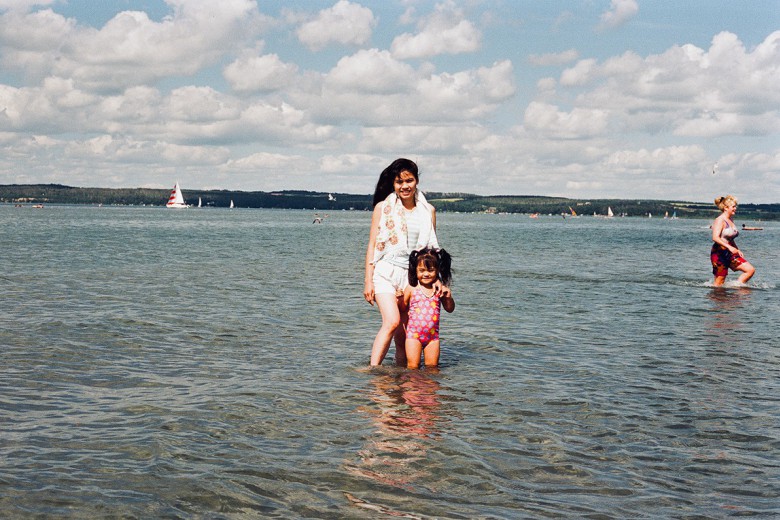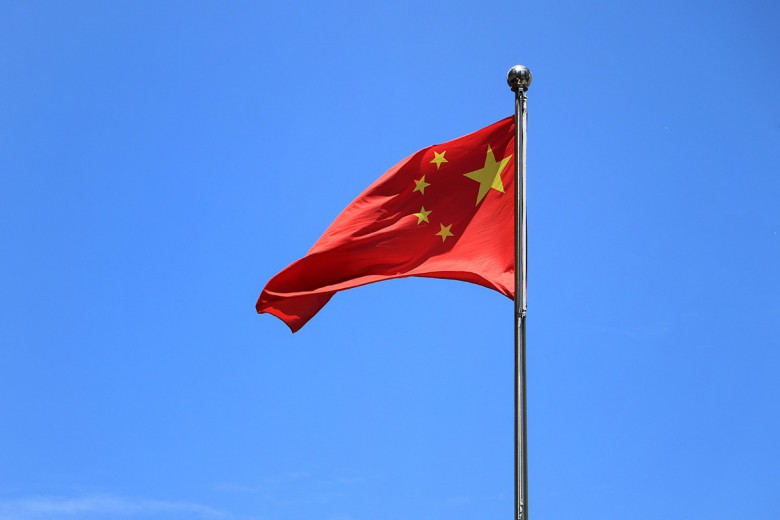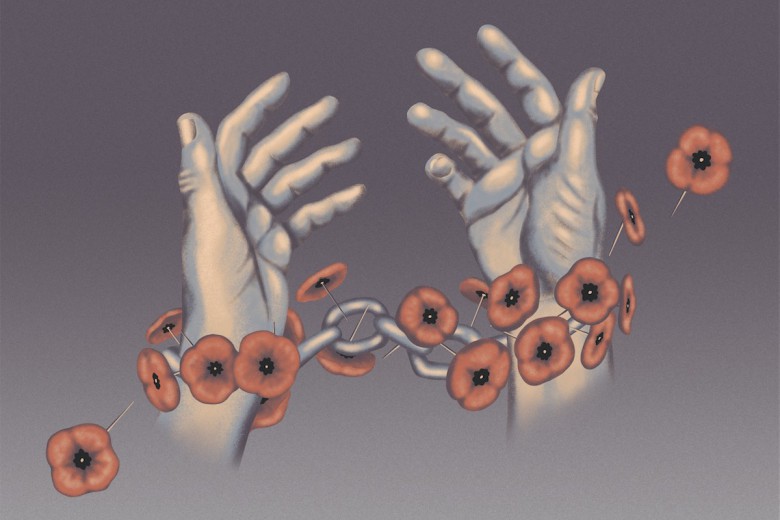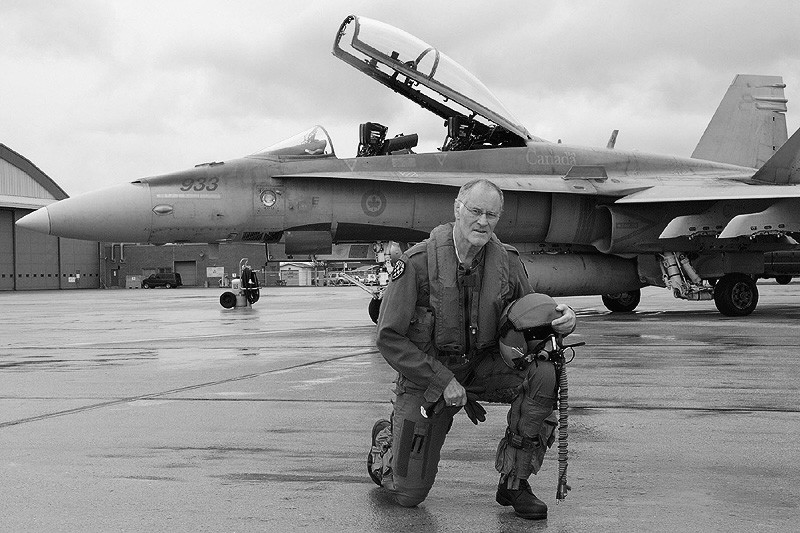
Out of two hundred warplanes that took part in Exercise Maple Flag 2005 in Cold Lake, Alberta in May, only ten were Israeli F-16s. It would be easy to miss their significance. Yet, when Canadian forces extended an invitation to the Israeli Air Force for the first time in thirty-eight meetings of the Maple Flag war games, it signalled, according to military planners, a marked shift in Canadian military and political policy in the twenty-first century: good night Battle of Britain, good morning Gaza.
Exercise Maple Flag is the code name for one of the world’s largest air force exercises, with over 5,000 crewmen from eleven countries conducting active training operations and testing new weapons at Alberta’s Cold Lake Air Weapons Range. Formerly know as the Primrose Lake Evaluation Range, the sprawling 11,630 square kilometre base is a symbol of Cold War preparedness, a state-of-the-art facility rapidly constructed between 1952 and 1954.
The range is a source of pride for the Canadian Forces and Department of National Defence (DND). In a glowing history posted on the DND website, the Airfield Engineers called the base “by far the biggest undertaking”- of Canada in the Cold War, not least because it required “a 42-mile, sand and clay access road [be] constructed through dense bush and muskeg.”
The dense forest and running streams tamed by this feat of engineering were the prodigious trapping, hunting and fishing lands of the Dene Suline, now known under the federal government’s band council system as the Cold Lake First Nations. In 1952, the Dene were cut off from their traditional lands and the population ultimately expelled. The nearby Canoe Lake Cree Nation faired little better, losing seventy-five percent of their homelands to the weapons range.
Some fifty years after the land grab, the Canadian government settled claim with the Cold Lake First Nations, paying out a total of $2500 to each band member and $7000 to each elder, with an additional twenty million dollars put in a development trust fund. That settlement amounts to about nine dollars per acre (roughly $22 a hectare), and not more than $150 per person for each year of their displacement. Such is the stage for Exercise Maple Flag, a six-week set of war games designed to provide training in the context of hyper-realistic simulations of aerial combat operations abroad.
MAPLE FLAG IS Canada’s answer to the US Air Force’s Red Flag exercises, which began in 1975 as a response to Vietnam War statistics indicating that as many as ninety percent of aircraft losses occurred in the pilot’s first ten combat operations. Red Flag and Maple Flag are constructed to be highly realistic so as to provide a level of training tantamount to real combat hours. A further aim of the exercises is to draw lessons from recent operations. These lessons have been applied to high intensity war games on targets so realistic that the range is described by Canadian Forces as “the world’s largest Hollywood set.”
Canadian pilot Major Todd N. Balfe goes further: “A joke was that [flying a sortie over Serbia] was just like Maple Flag…. It actually was more simple, because the ‘bad guys’ here at Maple Flag are a lot more proficient than they were over there,” said the veteran of the Kosovo war and past-commanding officer of Maple Flag (Aviation Week & Space Technology). Hyperbole aside, it is for this reason that the Maple Flag XXXVIII is so instructive: it is based on existent operational realities. In the words of Colonel Charles S. “Duff” Sullivan, Wing Commander of 4 Wing Cold Lake: “We build the exercise around the new type of battle that we are being asked to fight” (National Post).
According to official statements, this year’s exercise focused on implementing the use of tactical air power to enforce directives that were once the domain of armoured units and ground troops. As Defence Minister Bill Graham recently articulated, the emerging military/political agenda for Canadian Forces is about “enforcing peace.” In order to accomplish such enforcement upon an entire population, Graham states that the population in question “must perceive the use of force in their neighbourhood, and the civilian casualties that are suffered, as being for their greater good and not just the repressive measures of a foreign occupying force” (DND).
While a population welcoming the use of deadly force in their neighbourhood – however great the good – is decidedly unlikely, tactical aerial bombing is surely less illustrative of occupation than are “boots on the ground,” and is therefore a preferable lever of control. Perhaps more importantly, the aerial approach saves lives of the enforcing army. This is one component of what Bill Graham calls “the human element.”
The concentrated aerial attacks on Iraq throughout the 1990s – Desert Storm (1991), Desert Strike (1996), and Desert Fox (1998) – as well as the 78-day bombing campaign against Serbia in 1999 and the attack on Afghanistan in 2001, foreshadow a type of asymmetrical aerial bombing which, according to defence planners, is the way of the future.
In defence-speak, this new counterinsurgency warfare is a development which denotes a “Revolution in Military Affairs”: a shift in military doctrine arising from developments in technology, operational concepts, or organizational methods that profoundly alters or replaces old practices (DND). A Revolution in Military Affairs is not a common occurrence; it is a landmark. Think gunpowder, Blitzkrieg, and the atom bomb.
The use of asymmetrical air power to enforce the national interest is one element of the Revolution in Military Affairs that has emerged over the past two decades. The other components of the new doctrine include hi-tech surveillance, mobile “light” armies built around Special Forces, and control of outer space. While clearly rooted in advanced technological capacities of the twenty-first century, a Revolution in Military Affairs is not defined by technological advance alone. What makes a revolution is the willingness to actually use the new paradigm in place of the old.
All indications point to such willingness. Canadian Armed Forces senior command has been recently staffed by generals with relatively strong assymetrical warfare credentials. General Rick Hillier, promoted to chief of defense staff, headed the multinational force in Kabul and said of his recent assignment relieving American troops in Kandahar that Canadians were there “to confront terrorism right at the face” (Economist). While Major-General Walter Natyncyzk – who just returned from a year with American troops in Iraq – has been tapped to carry out reforms in the Canadian forces modeled after the United States Northern Command, with the regional army, navy and air force units answering to one Canada Command.
The crux behind the reforms is the capacity to face asymmetrical challenges – what the army calls the ability to wage “three-block war” in an urban setting. “Three-block war” is terminology lifted straight from the US Marine Corps’ bloody invasion of Fallujah in April 2004. Air power is the backbone of this type of warfare, and no nation on earth uses airpower to enforce occupation more effectively than Israel.
FOR THE PAST THREE DECADES, the Israeli Air Force (IAF) has been among the world’s most advanced and most active, yet the thirty-eighth running of the Maple Flag war-games was the first time Israel has been invited to participate at Cold Lake. Not only was the IAF invited, but Canada asked (and Israel obliged) the IAF to stay an additional two weeks in Cold Lake. The sudden rapprochement between the air forces of Canada and Israel is best understood in light of this developing Revolution in Military Affairs.
As Colonel Sullivan describes it, the era of the air wars (think Battle of Britain, he says) is over, and training international coalitions for World War III aerial dog-fighting (think Top Gun, this author says) is becoming obsolete. “What we’re seeing now is much more complex, much more of a counterinsurgency-type battle, fighting guerrilla warfare on the ground,” claims Sullivan (National Post).
The forward-looking edge of military doctrine is no longer facing advanced air forces (the Luftwaffe or the Red Army). Instead, it is enforcing control over populations in colonial or neo-colonial occupation regimes in essentially urban settings. “We’ve moved away from that large coalition air force designed to fight the Third World War,” said Sullivan (National Post).
Therefore, in order to simulate aerial operations that reflect the current reality in places like Iraq and Afghanistan, this year’s exercises focus on what sounds like a day in the Gaza Strip during the al-Aqsa intifada (which began in September 2000). Rather than targeting military installations or tank columns, the pilots will be given what Sullivan called moving, “time-sensitive targets,” which are described as targets that are legitimate for only a specific period of time – for example, a resistance leader traveling in a car or a gunman crouching in an alley.
This type of operation – namely, decreasing the time between identifying a target and striking it – is known in military slang as shortening the “kill chain,” and it is evidenced most dramatically by the Israeli Air Force. Between November 2000 – when Israeli Prime Minister Ehud Barak openly announced the policy of “targeted assassination” – and May 2005, more than 250 Palestinian political and military leaders and activists were assassinated by the IAF. Despite the fact that the Israelis have almost all their targets under surveillance, the air strikes invariably take place on crowded streets and involve the use of munitions such as the Hellfire, an antitank-armour missile, against civilian automobiles.
Avi Dichter, Israel’s internal security (Shin Bet) chief during the intifada, said of the assassination policy, “Its effectiveness is amazing. The State of Israel has brought preventative assassination to the level of a real art.”
Dichter added with pride: “When a Palestinian child draws a sky nowadays, he will not draw it without a helicopter.”
ACCORDING TO THE ISRAELI Defense Force, since mid-2004 more than ninety percent of Israeli attacks in Gaza – a densely populated strip characterized by crowded refugee camps – have been carried out by the Israeli Air Force (Defense News). Though no precise distinction can be made between IAF and IDF strikes, Palestine Red Crescent statistics show that during that same period, some 600 Palestinians were killed and 5000 were injured, the overwhelming majority of whom were civilians.
Nevertheless, after five years of fighting the Palestinian intifada, Israel’s expertise in this type of warfare apparently does not go unnoticed. Veteran Ha’aretz reporter Ari Shavit asked outgoing IDF chief of staff Moshe Ya’alon if Israel’s record in the intifada could be characterized as a “phenomenal military achievement,” and Ya’alon replied: “That is what foreign armies are saying” (Ha’aretz Magazine). Presumably, the Canadian Forces is among those armies. According to Canada’s Colonel Sullivan, “from 25,000 feet we can drop one bomb on a very precise target and that gets a lot of people’s attention very quickly” (National Post).
Indeed, under Ya’alon and air force commander Dan Halutz, the IAF played a leading role in fighting the Palestinian uprising and enforcing Israel’s occupation regime in the West Bank and Gaza – targeting not only militants, but also key civilian and state infrastructure. The most salient examples were the attacks on the refugee camps of Jenin (April 2002), Rafah (May 2004) and Jabalya/Beit Hanoun (October 2004), which were similarly characterized by the use of concentrated bombings by the IAF in tiny areas with dense populations. Consequences for Palestinians were severe, yet when viewed through a traditional military lens, the stalemate that emerged between Palestinians and Israelis is no victory for Israel.
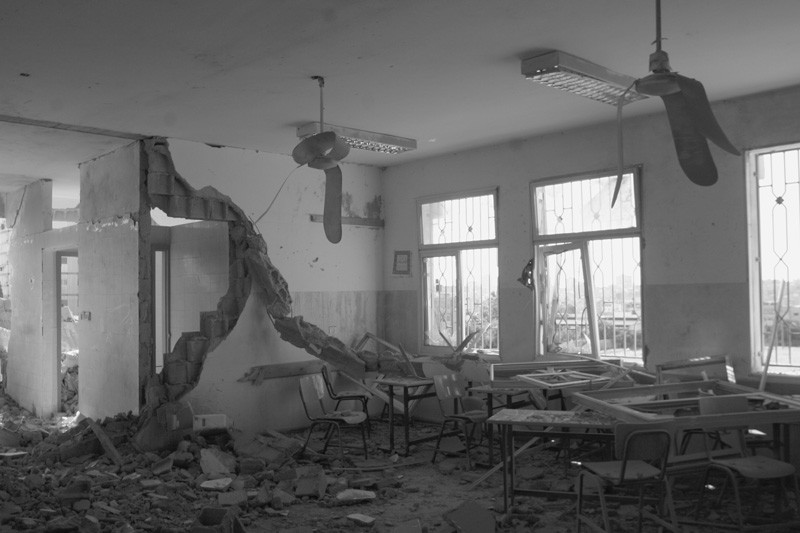
The IDF is one of the world’s most powerful armies, with access to significant state resources, and it has fought a poorly armed national liberation movement to an undeclared ceasefire. Yet, in the new paradigm, absolute victory is not exclusively the product of military X’s and O’s, and such attacks are considered strategic successes. In the words of Ya’alon, the goal is to “sear [into] the Palestinians” consciousness� that resistance is futile and victory impossible.
High-profile atrocities – like in August 2002 when Salah Shehade was assassinated along with his wife, teenage daughter and twelve others (including eight children) when the IAF dropped a one-ton bomb on the crowded apartment building where the senior Hamas commander lived, or in May 2004 when an IAF Apache Longbow attack helicopter launched missiles into a demonstration of mostly schoolchildren in Rafah, killing ten and injuring scores – did little to dim the ascendancy of air power in enforcing occupation throughout the al-Aqsa intifada. In fact, after the Shehade assassination Air Force head Dan Halutz, asked how it felt to deliver a bomb of this sort, replied that one feels only a “slight bump on the wing.” Despite the massive toll of young innocents, the attack passed Halutz’s “moral test,” and he infamously told his pilots amid the subsequent outcry to “sleep well at night,” like he does (Ha’aretz Magazine).
Israel went further, promoting Halutz to chief of staff, a position he assumed in May. Halutz’s appointment marked the first time that an air force commander was named to the position of chief of staff. Halutz’s selection over an infantry general was widely seen as the cementing embrace of a doctrine of air power in the service of urban warfare (leaving aside the harbinger this appointment represents to Iran).
A leading military publication, Defense News, picked up on the significance of the development and ran a front page feature titled: “In Israel, air power takes on ground jobs.” In the article, Halutz describes his doctrine of “environmental air control”: “a combination of advanced technology, unique operational concepts and close coordination among intelligence branches enable air power to relieve some of the burden traditionally shouldered by ground forces, reducing the need for…the prolonged presence of ground troops, which is overwhelmingly viewed as illegitimate by international norms.”
The much-talked about “disengagement” from Gaza has seen Israel using Halutz’s “environmental air control” to police the Gaza Strip without the need for IDF boots on the ground. Viewed through Bill Graham’s articulation of Canadian policy, all of this force will be for the “greater good” of Palestinians. Is this not the ultimate logic of the contradictory concept of “peace enforcement.”



